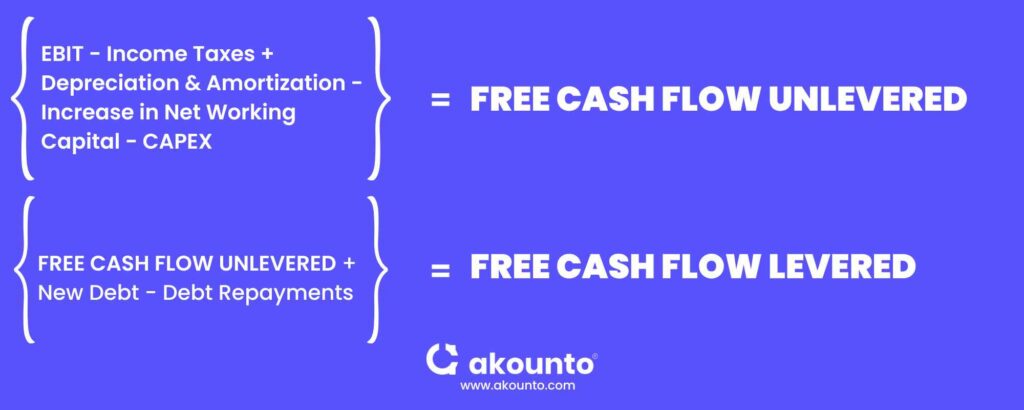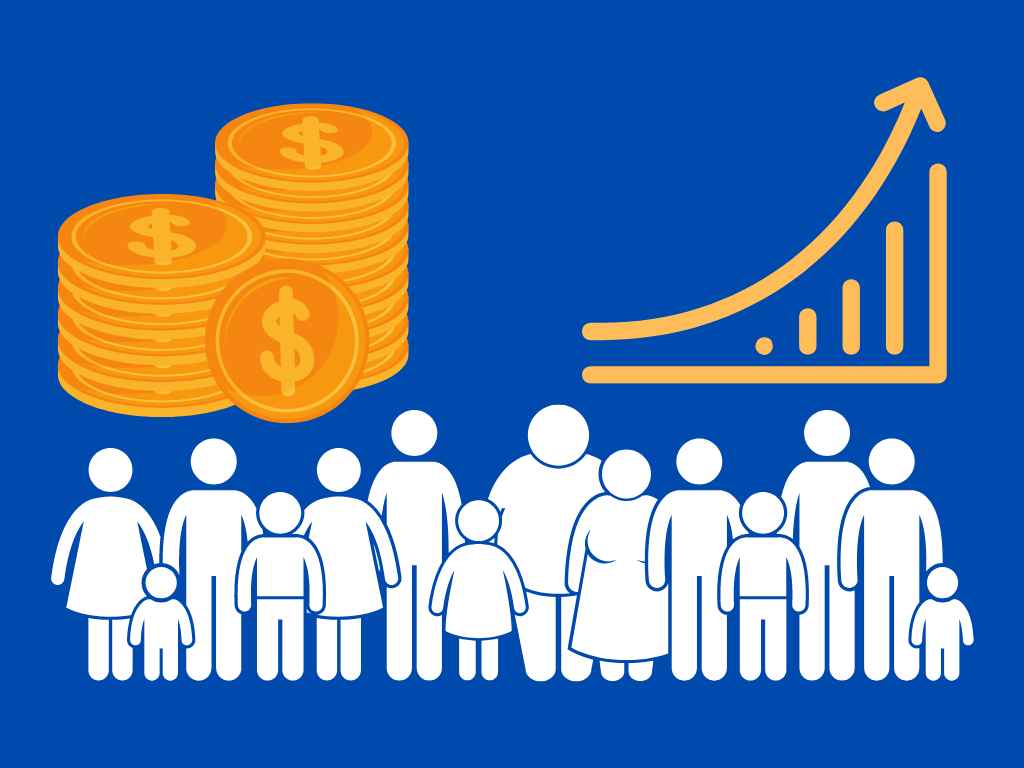What is unlevered free cash flow?
Unlevered free cash flow (UFCF) means gross cash generated by core business operations before accounting for obligations like taxes, interest payments, etc. UFCF is also known as “free cash flow to the firm” and represents cash available for investors.
UFCF represents the money or total cash at a company’s disposal. It can also be interpreted as the cash available to the company if it does not have to pay any taxes, debts, interest payments, etc.
Unlevered free cash flow is used in discounted cash flow (DCF) analysis and is of use for the investors mainly as it represents the enterprise value. UFCF tells the cash available for creditors and investors.
What’s covered in the article
Free cash flow is different from UFCF, as free cash flow is the cash left after meeting OpEx (operating expenditure) and CapEx demands.
Investors and shareholders use UFCF to determine the future returns on their present investments, indicating potential for expansion and growth.
The company’s cash flow statement shows whether the company’s cash is generated or lost and the sources of cash for an accounting period.
Financial Accounting Standards Boards’ Statement 95 mandates the classification of business activities into the following categories for creating cash flow statements:
- Cash flows from operating activities (can use direct or indirect method)
- Cash flows from financing activities
- Cash flows from investing activities
Unlevered free cash flow involves the following components for its calculation;
- Earnings before interest, depreciation, taxes, and amortization (EBITDA),
- Capital Expenditures (CAPEX),
- and Working Capital.
CAPEX represents investments in buildings, machinery, and equipment. Working capital includes inventory, accounts receivables, and accounts payables.
How does Unlevered Free Cash Flow Work?
Before diving deeply into unlevered free cash flow’s mechanisms, it is important to understand that unlevered free cash flow is also considered a discounted cash flow.
Discounted cash flow is a valuation method for estimating the investment value based on anticipated future cash flows. Discounted cash flow analysis helps businesses decide whether to invest in an asset, project, security, etc.
In discounted cash flow analysis, there are three components:
- Projecting free cash flows: The amount of cash that a company’s business operations will generate after covering operating and capital expenses is known as the free cash flow forecast.
- Discount Rate: The firm’s capital cost is the discount rate. This rate converts future cash inflows into dollar equivalents, acting as an interest rate.
- Terminal Value: End-of-projectional-period value, or terminal value, is the anticipated future worth of the company.
Both levered and unlevered cash flow projections are used in the first portion of the free cash flow projections. In your discounted cash flow analysis, you can utilize either leveraged or unlevered funds for the free cash flow amount. The option you select will have a substantial influence on future valuations.
A company may also monitor unlevered free cash flow to showcase the business more positively to shareholders and potential buyers. Businesses that are “highly leveraged,” i.e., having high debt levels, often report unlevered cash flow rather than levered cash flow. As a result, the firm can depict a larger operating capital, making it seem more profitable and solvent than it actually is.
Investors and potential buyers can also benefit from unlevered free cash flow in addition to business owners. When buying a company, paying down debts to increase a firm’s long-term market worth is often one of the investors’ objectives.
Investors will thus be interested in learning the unlevered free cash flow value, which shows how much capital will eventually be accessible after making interest payments and reducing the net debt level.
How to Calculate Unlevered Free Cash Flow?
In accounting terms, EBIT (earnings before interest and taxes) computed in the income statement is used to calculate free cash flows.
The default result of a cash flow statement computation is unlevered free cash flow.

For calculating unlevered free cash flow, the following adjustments are made to EBIT:
- taxes paid are subtracted
- depreciation and amortization are added (as they were non-cash expenses)
- increase in working capital is subtracted
- Subtract capital expenditures (CAPEX)
Unlevered free cash flow does not consider any information regarding the capital structure but emphasizes the cash flows available for creditors and shareholders.
In contrast, the changes related to the debt-equity ratio are considered in levered free cash flow. Increase or decrease in debt, repayment of old debts, etc., is highlighted, which signals the net cash available for the company.
Free Cash Flow (FCF) margin is a ratio in which sales is the denominator and FCF is the numerator. The margin shows us what percentage of revenue is converted to FCF. If the firm has debt, the unlevered FCF margin will be larger than the leveraged margin.
What does it tell?
In the business world, cash is king, and a lack of liquid money can leave a company unable to pay for employee salaries and other expenditures. Running a business, you need to pay much more attention to in-depth financials like levered and unlevered cash flow.
Unlevered free cash flow is of interest to all the concerned stakeholders in general and, in particular, to the management, creditors, and investors.
Management is interested in unlevered free cash flow to gauge the company’s liquidity position. The healthy amount of unlevered free cash flow signifies a healthy cushion for the cash working capital cycle.
The cash crunch can be fatal for any company, as the cash shortage hampers daily business operations. Even companies with a very healthy balance sheet and major assets can face a liquidity crunch—for instance, the 2008 economic meltdown (recession).
Creditors and debt holders are interested in knowing the debt servicing ratios of the company for long-term and short-term periods. The short-term debt servicing capability of the company signifies the ability to meet debt obligations.
When a small business is properly managed financially, it becomes easy to grow a company and procure loans. Use trustworthy accounting software to keep a closer eye on your finances. The days of handling your company’s finances in Excel are long gone. Using accounting software, you can get a rapid overview of all the information you want regarding the state of your business.
Benefits of Unlevered Free Cash Flow
- Unlevered free cash flow helps compute the enterprise value of a firm
- Unlevered free cash flow does not consider debt and financing charges or interest expense, so many analysts consider it a comprehensive measure of equity market capitalization.
- Unlevered cash flow does not consider CAPEX changes, so it becomes an accurate tool for analyzing companies.
- Unlevered free cash flows show the cash available for equity holders, creditors, and the company.
- In financial modeling, unlevered cash flows are considered for discounted cash flow analysis.
- Potential investors view the UFCF of a business to gauge its financial health.
Limitations of Unlevered Free Cash Flow
- It could be an inflated metric created purely to impress investors.
- The capital structure is not taken into account.
- Unlevered free cash flow may be adjusted by businesses as needed
- It may have negative influences (layoffs, delayed capital projects, etc.)
- Companies can manipulate unlevered free cash flow by cutting jobs, liquidating inventory, postponing capital projects, or delaying supplier payments to present better figures. All of these efforts have an effect, and investors should determine if increases in unlevered free cash flow are temporary or reflect improvements in the company’s core business.
- A company’s capital structure is ignored when analyzing unlevered free cash flow since it is calculated prior to interest payments. When interest payments are taken into account, a company’s levered free cash flow may be negative, which may present unfavorable future consequences. Instead of emphasizing a single year, analysts should examine patterns in both levered and unlevered free cash flow over time.
Final Thoughts
In the corporate world, cash is king; thus, you should start paying close attention to detailed financials like levered and unlevered cash flow. You’ll be better positioned to get loans and expand your business if you practice good financial management.
Visit Akounto’s blog for similar articles that helps small businesses to grow and prosper.











